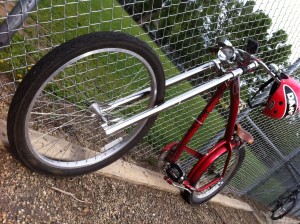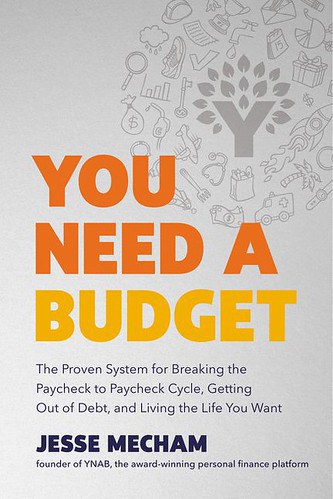Side Hustles – The Good, Bad And Ugly

Recently, I have been reading in my spare time (which isn’t much). Side HustleThe new book by my friend Chris Guillebeau. Since CG is a close friend, I don’t think I can give an objective review. I will instead give a short summary, and then share my own experiences of earning money side-by-side.
Side Hustle Nation
There are two fundamental ways to improve your finances: Either you earn more money or spend less. The majority of money writers concentrate on the “spend-less” side. It’s great to cut back, but you only have so much money. If you want to achieve your goals, you will need to earn more money. “More income means more options,” Guillebeau writes. “More choices mean more freedom,” writes Guillebeau.
A side hustle can be a great way to make more money. Guillebeau says a side hustle is a “money-making project that you start as a side job, often while working your day job.” It’s also a way of earning extra money without having to take on the risks that come with working for yourself.
Side hustles can be created with little to no money. They are often passion projects that allow people to do what they love while earning a bit extra.
Guillebeau believes there are five steps that you must take to start a side business:
- Create an arsenal of ideas. Start by brainstorming a list that includes ways for you to earn money during your spare time. How can you combine your resources and skills to create a product that people will pay for? Write down as many ideas as possible, and then weigh their pros and cons.
- Choose your best idea. Since you can’t do it all, you have to choose the idea that you are most excited about. Guillebeau says, “You are not making a decision that will last a lifetime.” You’re searching for the best idea at the perfect time. Find out how others have approached the problem. Find out who your ideal client is. Decide on what you are going to sell.
- Get ready for liftoff. Once you’ve selected your product or services, it’s now time to get ready for launch. Determine the most important logistics issues. Set a price. Create your workflow. Take the time to learn the basics.
- Don’t launch until is ready. I learned this lesson the hard way. Before you begin a large project, there is always work to be done. It’s true that I was not ready to relaunch Get Rich Slowly on Sunday but I still did it. Once you’ve got your pricing, workflow and logistics in a reasonable range, it’s time to go. Start hustling.
- You will not be able to get everything perfect, especially if you have launched your product before you are ready. Learn from your experiences as you sell and interact with clients. What works, enhance and what doesn’t? Ask for help if you are unable to handle certain tasks. Automate a process if it can be. If necessary, adjust pricing.
The most important thing to do is take action. Nothing else matters if you don’t act.
There’s a lot more in the book, but these are the main concepts. If you have ever thought about making money through a side hustle, : Side Hustle has a wealth of information and ideas that will help you earn money from your spare time.
You can also check out Guillebeau’s daily Side Hustle Schools which features casual entrepreneurs of all kinds. You might also like Nick Loper side Hustle Nation.
As Father, so Son
 When I read the Side HustleMy mind wandered back to my own side hustles and those of my family and friends.
When I read the Side HustleMy mind wandered back to my own side hustles and those of my family and friends.
, my father was an entrepreneur. I have mentioned this many times. He always started new businesses. He had a business on the side, even when he was working for someone else.
He decided to join the health food craze in the 1970s when I was a child. He built a grain grinder in his spare time. After showing off his prototype, he decided he would make them and sell them in health food stores throughout Oregon. The side job turned into a real business. Within a few short years, Harvest Mills began building and selling dehydrators.
After Dad sold Harvest Mills, and went back to sales, Dad dabbled with many other things.
- He sold World’s Finest Chocolate from door to door.
- He wrote and sold accounting software for Apple II computers.
- He grew and sold nursery stock.
All of these businesses were not particularly successful. He eventually started Custom Box Service which is still supporting our family today.
It’s not surprising that my dad encouraged me to start businesses. I used to repackage duplicate Star Wars cards and sports cards in order to sell them to other children. After I read my Hardy Boys, I would sell them too. We made comics together to sell at the school store. One of my comics, which was published several years before Teenage Mutant Ninja Turtles existed, featured a team super-hero Turtles.
Even as an adult I continued to pursue side projects. While I was working in the box factory, i took computer programming courses. Then, I was hired (actually, I had two jobs) to program at a local community college. I worked three jobs at one point, totaling 60+ hours a week. My side hustles brought in some decent money, but I wasted it on stupid things. I hadn’t become a money manager, nor had I learned how to slowly get rich.
Then I began computer consulting. I also helped friends and family set up networks and repaired their computers. Then I started building websites, including Get Rich Slowly.
Get rich slowly started out as a side job. I needed some extra money to pay off my debt.
It’s a fact that side hustles are not always successful. Some side hustles can grow into something much bigger. A passion project can turn into a huge.
The Best Side Jobs Aren’t Always Awesome
Even though this is something that I’m passionate about, I won’t pretend to say that side hustles are always successful. They don’t.
My computer consulting gig was never very lucrative. It was a lot of work, even though I earned a few hundred dollars. Money was never worth it. Only two of the businesses that my father ran in his spare-time made him money. Two out of 10 isn’t too bad, right?
Kim, my girlfriend, tried a side job that did not work out. She set up an internet store in the evenings and on weekends while working as a dental hygiene. She sold teething pendants. She sold hundreds of necklaces. She only broke even. She decided to stop after two years. Kim doesn’t regret her experience, it was just not profitable.
Other people I know have also tried side hustles, with varying levels of success. My friend makes and sells grapeseed oils. I know a few people who are interested in renting out properties. I know a woman that designs websites as a hobby. I know several people who write articles and/or books to earn extra money. Some people earn a lot of money from their projects, while others barely make enough to maintain the business.
I do think that side jobs are generally awesome. Even if you don’t make a lot of money, side hustles give you valuable experience in entrepreneurship. You learn to be self-directed and proactive. They can also help you supplement your income.
What about you? You? Have you ever tried a side gig? What did you learn from it? Would you do anything differently if it were to happen again? Do you think others should start their own side jobs? What advice would you give?











+ There are no comments
Add yours